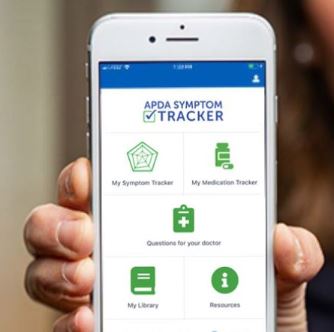The Promise of Telemedicine in Treating Parkinson’s disease
Telemedicine, the use of current communication technologies (like a smart phone or tablet) to deliver medical care, can uniquely serve the Parkinson’s disease (PD) community. Recently, the International Parkinson and Movement Disorder Society Telemedicine Task Force published an article in Current Neurology and Neuroscience Reports entitled The Promise of Telemedicine for Movement Disorders: an Interdisciplinary Approach. The report reviewed the current state of telemedicine in the evaluation and treatment of patients with PD and other movement disorders. There are a number of academic centers across the country that have telemedicine programs for PD that are currently in operation.
The pros of telemedicine
Using telemedicine, a physician can interview, examine, and manage the disease of a patient who is situated in a different location. Telemedicine addresses a number of issues specific to PD:
- Some Parkinson’s patients may find it difficult to get to their clinic visits because of mobility limitations. Telemedicine allows patients to be evaluated at home.
- There is a lack of neurologists trained in movement disorders in many parts of the United States and the world. Telemedicine allows patients to access the experts they need, despite where they’re located.
- Assessing slowness of movement, tremor, difficulty with walking and other clinical aspects of PD is visual and can therefore be performed adequately through a device with video capability.
- A clinician may obtain a more accurate understanding of a patient’s symptoms and limitations when the patient is being examined via telemedicine in the comfort of his/her own environment.
In addition, there are emerging opportunities to evaluate patients with PD using telemedicine beyond performing a technologically-assisted traditional office visit.
- Telemedicine could potentially allow patients to access a clinician in real-time, during the moments in which they are having the most difficulty.
- Telemedicine could incorporate patient monitoring tools (like an app on a phone or tablet) which track a patient’s symptoms or response to treatment over time and make that information available to the clinician so they get a more accurate understanding of how the patient is doing.
- Physical therapy, speech therapy and cognitive rehab sessions could also be administered to PD patients via telemedicine and studies to formulate such programs are under investigation now.
- Telemedicine could also make interdisciplinary care more easily. The patient remains at home and experts in various fields can do their assessments and give their recommendations via telemedicine as needed. This model is also currently being studied for feasibility and efficacy.
The cons of telemedicine
There are a number of limitations of telemedicine that must be mentioned:
- Telemedicine can only be utilized by those who are familiar with and have access to the necessary technology. This could be a challenge for those who are elderly or in lower socio-economic brackets.
- The doctor-patient relationship may be compromised without the direct in-person contact that is lost through telemedicine.
- Certain aspects of the neurologic exam must be performed in-person, namely assessment of stiffness and balance.
Despite these limitations however, the advent of technologies that allow for interaction with and monitoring of patients without travelling to a movement disorders center, will hopefully improve the quality of life of patients with PD across the US and around the globe.
An APDA tool to help you today
The APDA Symptom Tracker App was created specifically for people with PD to help you significantly improve your ability to easily and accurately track your PD symptoms and medications, and relay that important information to members of your medical team; with the ultimate goal of receiving better, more personalized care. The app is available in English and Spanish. This free tool allows you to identify any changes in symptoms and make visits with your healthcare professionals more productive. You can download it easily from Apple App Store or Google Play. The more accurate and thorough information you can provide to your doctor, the better he/she can help manage your treatment plan.

The APDA Symptom Tracker App can help you:
- Keep track of your motor symptoms – including tremors, rigidity, balance and more.
- Monitor your non-motor symptoms — hallucinations, delusions, fatigue, anxiety, depression, and others.
- Create your report, share with your care team, or save to your library within the app.
- Consult with your doctor for more personalized treatment, resources, and support.
Over time, you can compare the results to see if certain symptoms are getting worse, and determine which symptoms need to be addressed more urgently than others. The app also includes an interactive medication tracker, helpful notifications and reminders, and other helpful features!
Tips and takeaways
- If you live in a place without a movement disorders physician that you can get to, consider asking your neurologist if he/she is aware of a telemedicine program in the surrounding areas that you can access.
- Even if you do not join a formal telemedicine program, remember that technology can be helpful to you. Sometimes, there are particular movements that you would like to demonstrate to your physician that do not occur all the time. Consider having someone videotape you to show it to your physician at your next visit.
